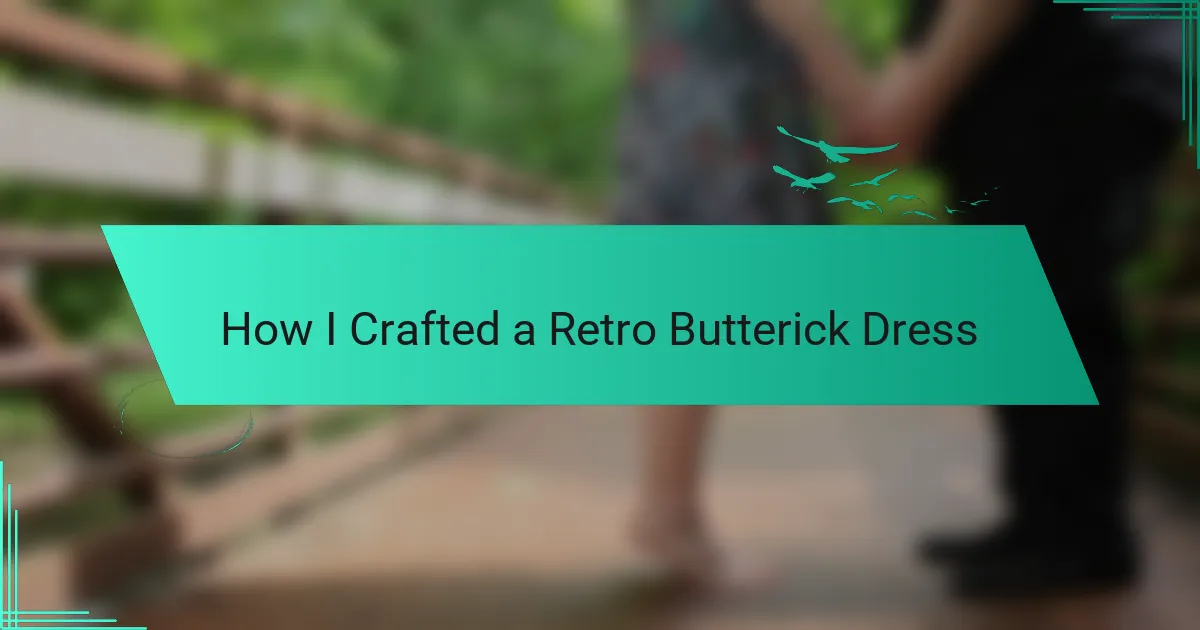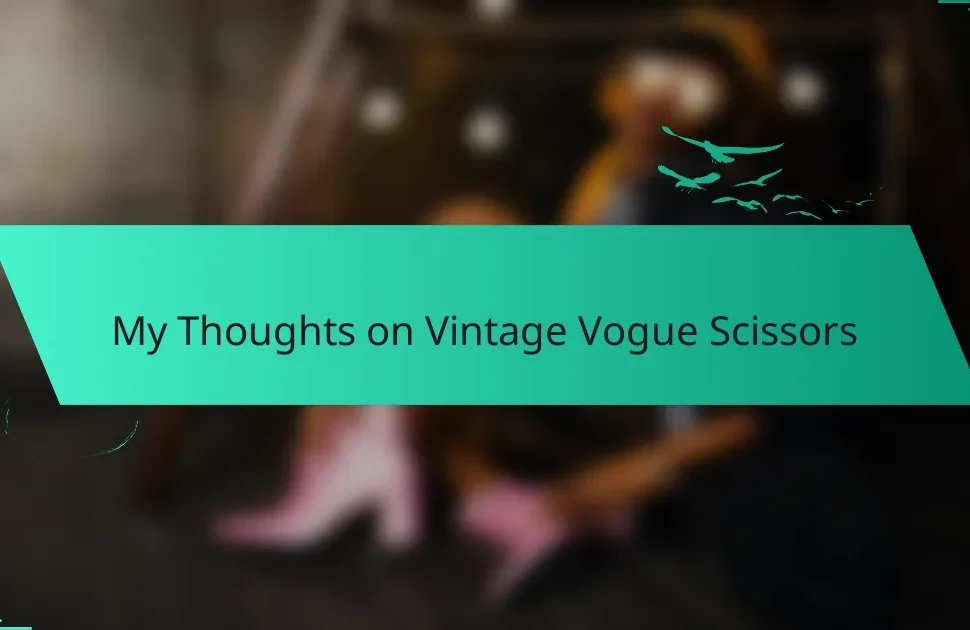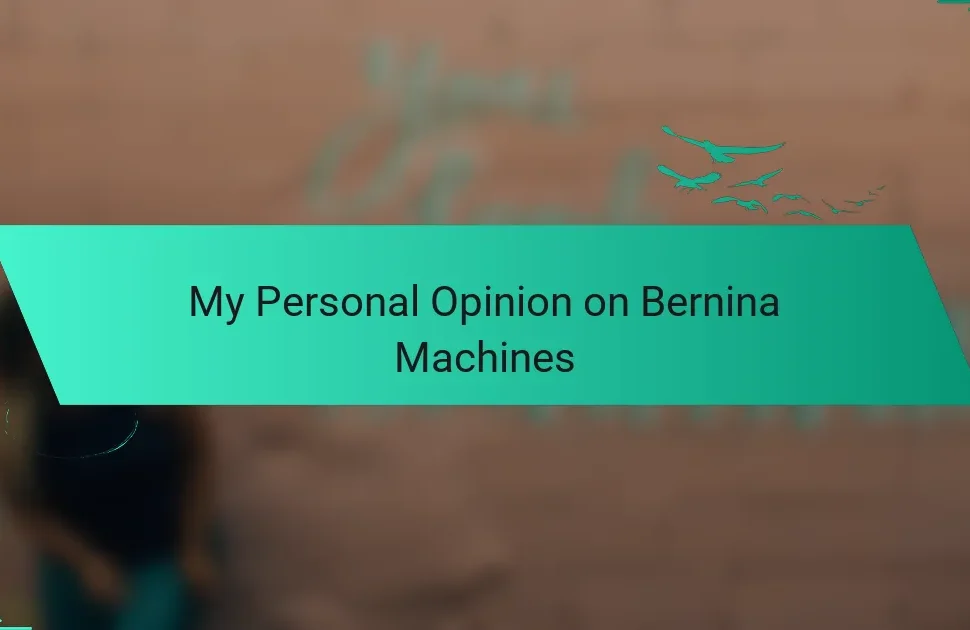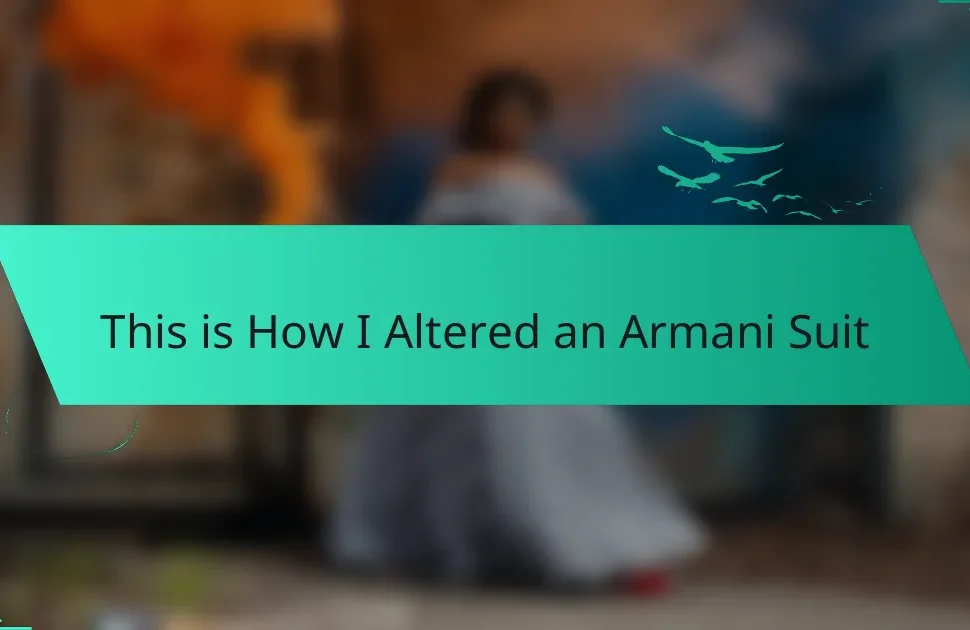Key takeaways
- Vintage fashion DIY allows for creative expression and individual style while reconnecting with past eras.
- Butterick patterns are user-friendly and offer a variety of designs that cater to different skill levels and historical styles.
- Selecting the right fabric is crucial, involving considerations of pattern, texture, weight, care, and budget.
- Personalizing your dress with unique alterations and embellishments enhances its character and makes it a one-of-a-kind piece.
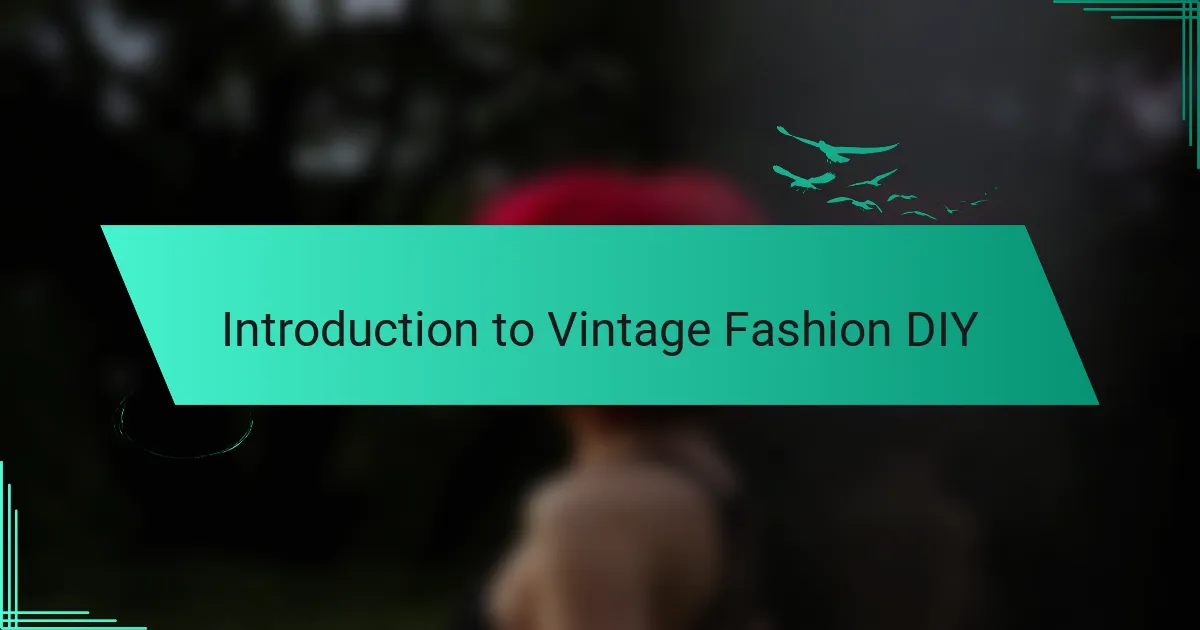
Introduction to Vintage Fashion DIY
Vintage fashion DIY is more than just crafting; it’s a creative journey that connects us with the styles of bygone eras. Have you ever found yourself captivated by the elegance of the 1950s or the bold patterns of the 1970s? I certainly have, and that fascination often leads me to explore the art of recreating those timeless pieces.
As I delve into retro patterns, like the charming Butterick dress designs, I feel a sense of nostalgia mingled with excitement. Each stitch tells a story, and there’s something incredibly fulfilling about bringing these vintage garments back to life with my own hands. Honestly, who wouldn’t want to wear a piece of history while showcasing their unique style?
Crafting vintage fashion allows us to express individuality in a world full of fast fashion. When you’re sewing a dress that harks back to simpler times, you’re not just following a trend; you’re participating in a tradition. Have you ever experienced the joy of slipping into a handmade dress that feels like it was made just for you? That sensation is truly priceless.
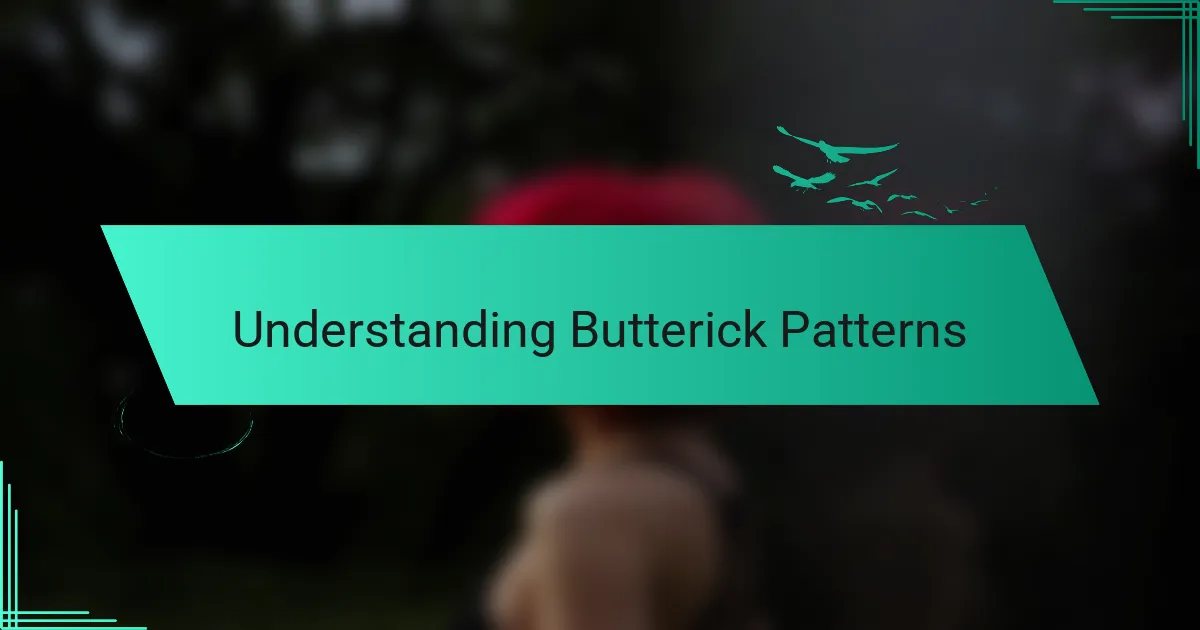
Understanding Butterick Patterns
Butterick patterns have a reputation that precedes them, making them a staple in the vintage sewing community. I’ve always found their designs to be incredibly user-friendly, with instructions that guide you through every step. It’s like having a supportive friend beside you, reassuring you that you can totally nail that retro look.
What sets Butterick apart for me is the variety in their offerings; they capture the essence of different eras beautifully. I remember when I first attempted a Butterick 1950s dress pattern—it felt like rediscovering a treasure. The intricate details and the way the pattern breathed life into my fabric was exhilarating. Have you ever felt that rush when you realize your creation is turning out just as you envisioned?
Understanding Butterick patterns means appreciating their balance of complexity and accessibility. They often feature classic silhouettes, and the sizing can be adjusted easily, which is great for beginners and veterans alike. There’s something rewarding about measuring, cutting, and ultimately seeing a historical garment come to life. It’s a dream come true for any vintage enthusiast, wouldn’t you agree?

Selecting the Right Fabric
Selecting the right fabric for your retro Butterick dress is truly one of the most exciting parts of the journey. When I first started, I was overwhelmed by the sheer variety of options available. I remember strolling through the fabric shop, my heart racing. It wasn’t just about finding any fabric; it was about discovering the perfect texture and print that would bring my vision to life.
I’ve learned that the choice of fabric can significantly influence the overall vibe of your dress. For example, lightweight cottons provide a more casual feel, while silk brings an elegant touch. Here are a few considerations to keep in mind when selecting your fabric:
- Pattern and Color: Look for prints that embody the era you’re emulating, whether it’s polka dots for a playful vibe or florals for a classic touch.
- Texture: Consider how the fabric feels against your skin and how it drapes. Fabrics like rayon will flow nicely, while taffeta adds structure.
- Weight: Lighter fabrics work well for warmer months, while heavier materials are ideal for cooler seasons or structures.
- Care Instructions: Check how the fabric needs to be cared for. I’ve made the mistake of choosing a fabric that required dry cleaning – not a fun surprise!
- Budget: Vintage-inspired doesn’t have to break the bank. There are plenty of affordable options that still deliver on style.
These tips have definitely helped me in my fabric selection, transforming my vision into reality!
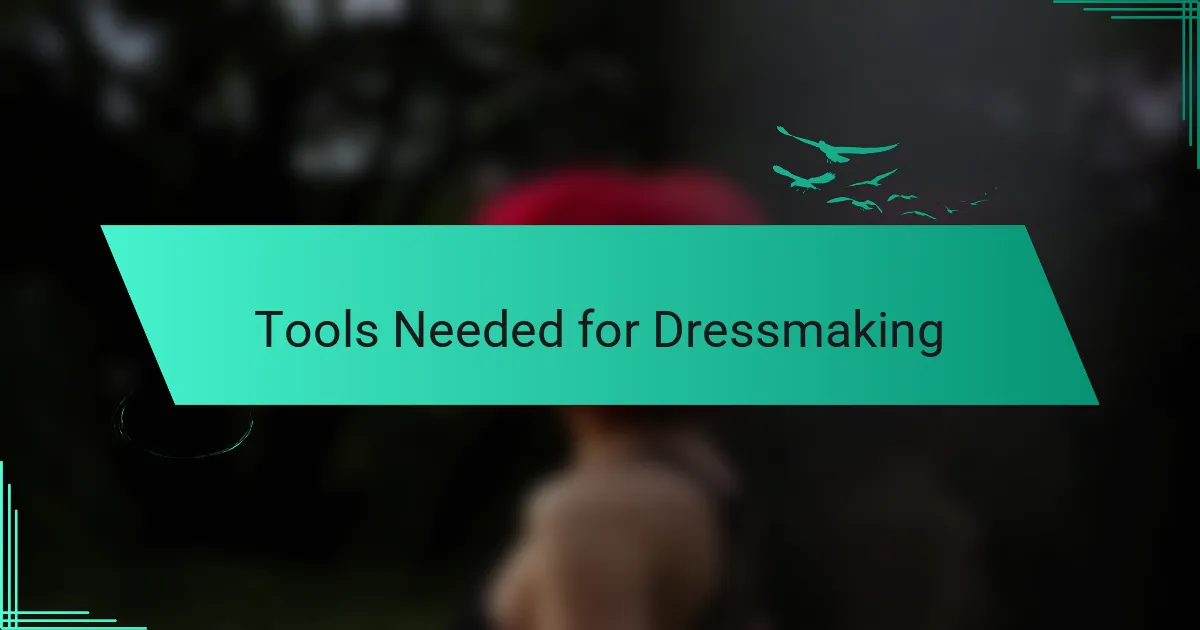
Tools Needed for Dressmaking
When I embarked on crafting my retro Butterick dress, I quickly realized that having the right tools made all the difference. I felt a wave of excitement every time I reached for my favorite fabric scissors; they cut with such precision that I could almost hear them singing as they sliced through the fabric. It’s a simple tool, but it brings an immense amount of joy when you know it’s up for the task.
As I gathered my supplies, I made a checklist that helped me stay organized and focused. The right tools not only streamline the process but also enhance the overall enjoyment of dressmaking. Here’s a list of essentials that I recommend for any vintage dress project:
- Fabric scissors
- Measuring tape
- Tailor’s chalk or fabric markers
- Sewing machine
- Pins and pin cushion
- Needle and thread
- Iron and ironing board
- Pattern weights or paper weights
Each item has its own special role in bringing the dress to life, and trust me, having good quality tools can make your sewing experience much more fulfilling.
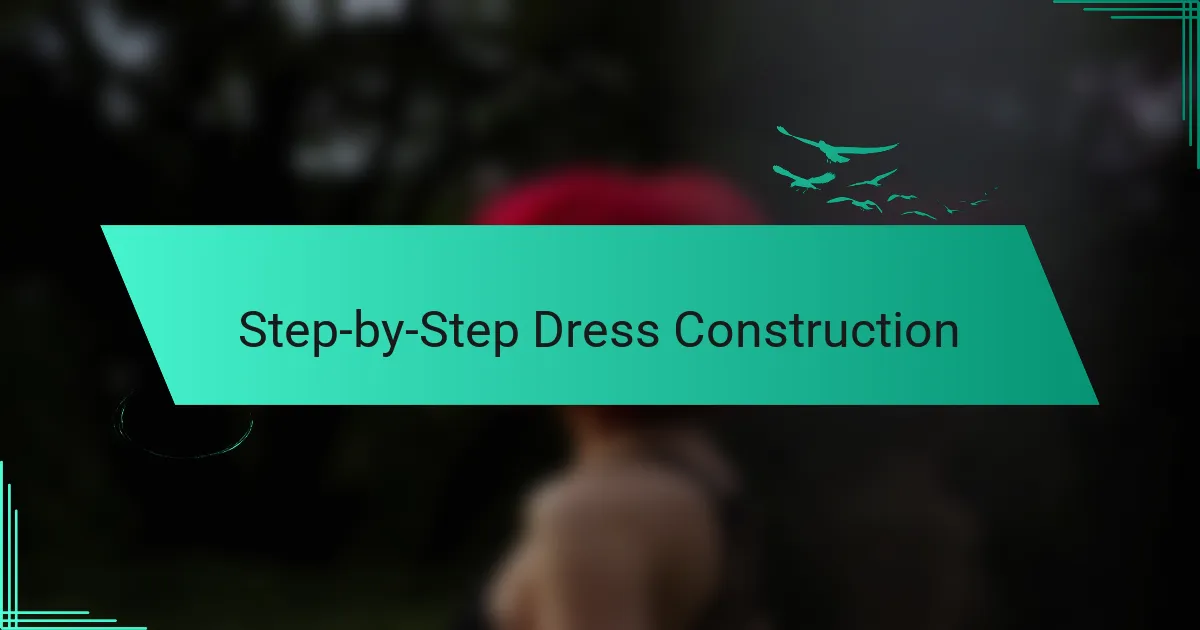
Step-by-Step Dress Construction
Once you have your pattern and fabric ready, it’s time to cut the pieces. I vividly remember the moment I laid my fabric out on the cutting table, heart racing with anticipation. The feeling of scissors gliding through the fabric, creating shapes that would soon transform into a garment, is nothing short of magical. Have you ever felt that thrill when you see your idea start taking form?
Next comes the stitching, which can be both exhilarating and nerve-wracking. I often find myself humming to my favorite vintage tunes as I sew, each stitch reminding me of the craftsmanship that went into designs of yesteryear. I like to start with the bodice because it instantly gives me a sense of accomplishment. You see, when the bodice fits just right, it feels like a small victory that motivates me to continue. Plus, it’s a fantastic way to fine-tune your sewing skills on a smaller section before tackling the skirt.
After attaching the skirt, I pay close attention to finishing touches. This is where my excitement peaks; it’s like adding the cherry on top of a sundae! I often experiment with various hems or even pockets to make the dress more functional. Remember, vintage fashion is about expression, so don’t be afraid to personalize your piece! What small detail will you add that makes it uniquely yours?
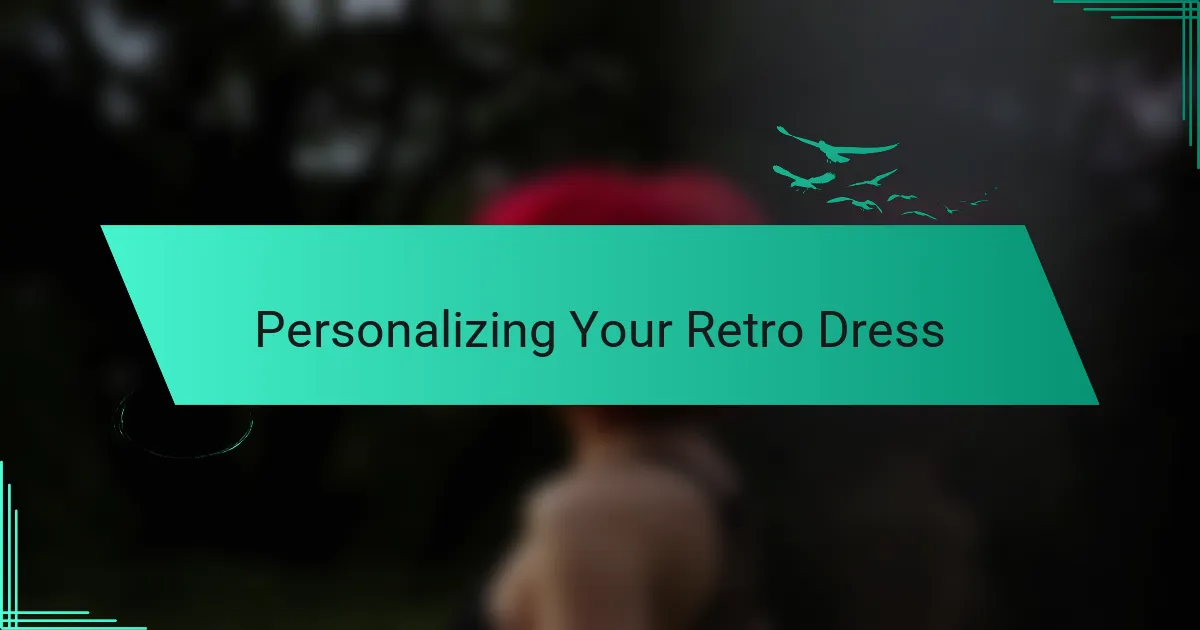
Personalizing Your Retro Dress
Personalizing your retro dress is where the fun really begins! I remember how excited I was to choose the fabric; it felt like picking the perfect canvas for my masterpiece. Adding your unique touch, whether through altering the neckline or choosing contrasting pocket fabrics, can truly transform a classic Butterick pattern into something that sings your style.
Another approach I found rewarding is incorporating vintage embellishments, like lace or buttons that you might find at a local thrift shop. Every detail reminds me of the story behind it, just like the cute button I found that once belonged to a coat from the 1960s. These little personal touches not only enhance the dress but also make it a cherished piece of my wardrobe.
Here’s a comparison of different personalization techniques for your retro dress:
| Personalization Technique | Description |
|---|---|
| Fabric Choice | Select fabrics that reflect your personal style and mood. |
| Neckline Alterations | Change the neckline to a shape that flatters you best. |
| Use of Embellishments | Add items like lace or vintage buttons for a unique flair. |
| Pockets | Incorporate contrasting fabrics for functional and stylish pockets. |
